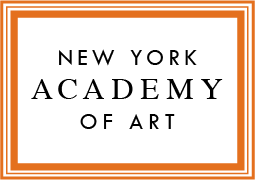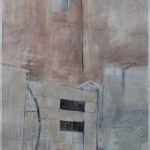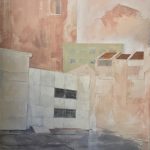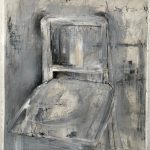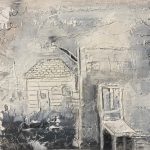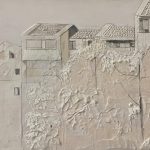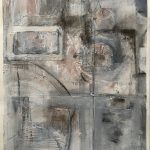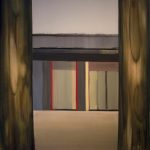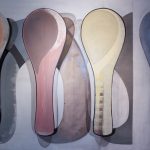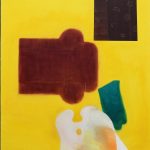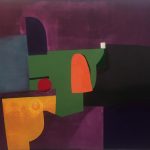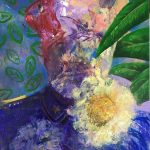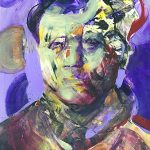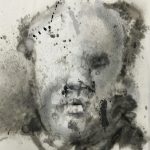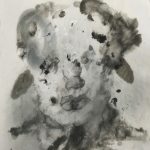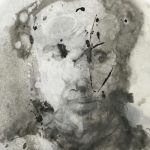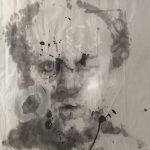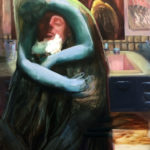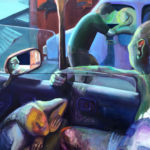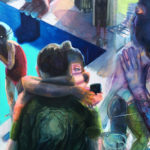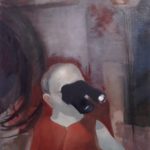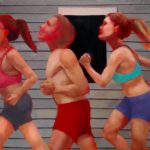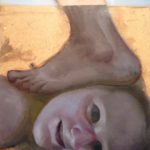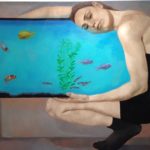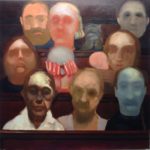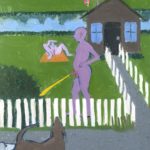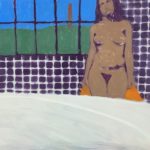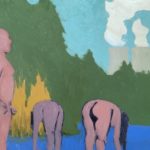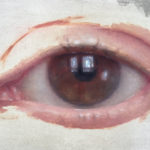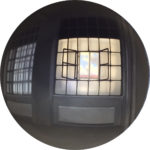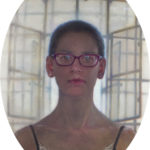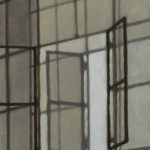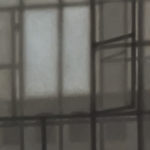China Residency 2016-2017
During the summer of 2016 Tania Alvarez (MFA 2017), Amina Kerimova (MFA 2017), Isaac Mann (MFA 2017), and Pedro Pérez-Guillon (MFA 2017) participated in a four-week Artist-in-Residence Program on the Central Academy of Fine Arts in Beijing campus. At the end of the residency all four artists participated in the group exhibition at Dayungtang Museum. This exhibition includes some of the work created during or attributed to their residency experience.
The Academy’s China Residency is made possible by the New York Academy Travel Fund, the Villore Foundation and Academy Trustee Emeritus Gordon Bethune.
- Tania Alvarez (MFA 2017)
- Tania Alvarez (MFA 2017)
- Tania Alvarez (MFA 2017)
- Tania Alvarez (MFA 2017)
- Tania Alvarez (MFA 2017)
- Tania Alvarez (MFA 2017)
- Amina Kerimova (MFA 2017)
- Amina Kerimova (MFA 2017)
- Isaac Mann (MFA 2017)
- Isaac Mann (MFA 2017)
- Pedro Perez-Guillon (MFA 2017)
- Pedro Perez-Guillon (MFA 2017)
- Pedro Perez-Guillon (MFA 2017)
- Pedro Perez-Guillon (MFA 2017)
- Pedro Perez-Guillon (MFA 2017)
- Pedro Perez-Guillon (MFA 2017)
Leipzig Residency 2016
During the summer of 2016 Danica Lundy (MFA 2017, Fellow 2018 ), Rebecca Ocutt (MFA 2017), Anastasiya Tarasenko (MFA 2017), and Anna Wakitsch (MFA 2017) participated in a two-month Artist-in-Residence Program hosted by Leipzig International Art Programme, in Leipzig, Germany.
The Academy’s Leipzig residency is made possible by the New York Academy Travel Fund, the Villore Foundation and Trustees Gordon Bethune and Eric Fischl.
- Danica Lundy (MFA 2017, Fellow 2018)
- Danica Lundy (MFA 2017, Fellow 2018)
- Danica Lundy (MFA 2017, Fellow 2018)
- Rebecca Orcutt (MFA 2017)
- Rebecca Orcutt (MFA 2017)
- Rebecca Orcutt (MFA 2017)
- Rebecca Orcutt (MFA 2017)
- Rebecca Orcutt (MFA 2017)
- Anastasiya Tarasenko (MFA 2017)
- Anastasiya Tarasenko (MFA 2017)
- Anastasiya Tarasenko (MFA 2017)
- Anastasiya Tarasenko (MFA 2017)
- Anna Wakitsch (MFA 2017)
- Anna Wakitsch (MFA 2017)
- Anna Wakitsch (MFA 2017)
- Anna Wakitsch (MFA 2017)
- Anna Wakitsch (MFA 2017)
Tschabalala Self Artist Talk
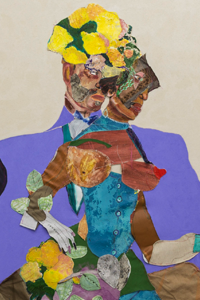
Tschabalala Self is a New Haven based painter. She received her B.A. from Bard College in 2012 and her M.F.A. from the Yale School of Art in 2015. Her work builds a singular style from the syncretic use of both painting and printmaking to explore ideas about the black female body. The artist constructs exaggerated depictions of female bodies using a combination of sewn, printed, and painted materials, traversing different artistic and craft traditions. The exaggerated biological characteristics of her figures reflect Self’s own experiences and cultural attitudes toward race and gender. She has appeared in group exhibitions at the Hammer Museum in Los Angeles, the Studio Museum of Harlem, and the Queens Museum of Art.
Jon Kessler Artist Talk
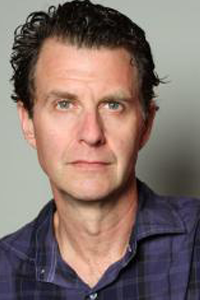 Jon Kessler received his BFA from SUNY-Purchase. He has sculptures in the permanent collections of the Museum of Modern Art in New York, the Whitney Museum of American Art, the Walker Art Center, and the Museum of Contemporary Art in Los Angeles, and been the subject solo shows at PS 1, Deitch Projects, and The Drawing Center. He has received several NEA grants, the St. Gaudens Memorial Fellowship, a Guggenheim Fellowship and a Foundation for the Performing Arts grant.
Jon Kessler received his BFA from SUNY-Purchase. He has sculptures in the permanent collections of the Museum of Modern Art in New York, the Whitney Museum of American Art, the Walker Art Center, and the Museum of Contemporary Art in Los Angeles, and been the subject solo shows at PS 1, Deitch Projects, and The Drawing Center. He has received several NEA grants, the St. Gaudens Memorial Fellowship, a Guggenheim Fellowship and a Foundation for the Performing Arts grant.
Art Review: Coming to Power at Maccarone Gallery
Art Review: Jonathan Gardner at Casey Kaplan Gallery
| “Bather with a Yellow Towel” |
| “Connection” |
| “Reclining Nude” |
| “The Model” |
| “Dark Mirror” |
| “In the Mirror” |
| “Salmon Sofa” |
Ali Banisadr Artist Talk
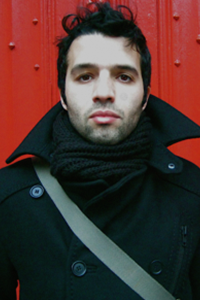 Born in Tehran in 1976, Ali Banisadr’s formative childhood years were during the Iran-Iraq war. Banisadr earned a BFA from the School of Visual Arts in 2005, and an MFA from the New York Academy of Art in 2007, where he was awarded the Postgraduate Fellowship followed by winning an award in painting from New York Foundation for the Arts. He is currently represented by Galerie Thaddeus Ropac in Paris and Sperone Westwater in New York. He has recently had solo exhibitions at Frieze New York, BlainSouthern Gallery in London, and Galerie Ropac in Paris, and appeared in group shows at the Venice Biennale, the Prague Biennale, the Queens Museum of Art, Stedelijk Museum (Ghent), Victoria Miro Gallery (London) and the Saatchi Gallery (London). His works are in the permanent collections of the Metropolitan Museum, the British Museum, the Museum of Contemporary Art in Los Angeles, the Francois Pinault Foundation and the Saatchi Collection, among others.
Born in Tehran in 1976, Ali Banisadr’s formative childhood years were during the Iran-Iraq war. Banisadr earned a BFA from the School of Visual Arts in 2005, and an MFA from the New York Academy of Art in 2007, where he was awarded the Postgraduate Fellowship followed by winning an award in painting from New York Foundation for the Arts. He is currently represented by Galerie Thaddeus Ropac in Paris and Sperone Westwater in New York. He has recently had solo exhibitions at Frieze New York, BlainSouthern Gallery in London, and Galerie Ropac in Paris, and appeared in group shows at the Venice Biennale, the Prague Biennale, the Queens Museum of Art, Stedelijk Museum (Ghent), Victoria Miro Gallery (London) and the Saatchi Gallery (London). His works are in the permanent collections of the Metropolitan Museum, the British Museum, the Museum of Contemporary Art in Los Angeles, the Francois Pinault Foundation and the Saatchi Collection, among others.
Damian Loeb Artist Talk
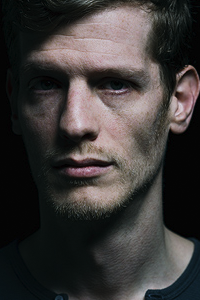
Damian Loeb (born 1970) is an artist currently living and working in New York City since 1989. He was discovered by Jeffery Deitch in 1997 and is currently represented by Acquavella Galleries. Loeb, using primarily painting and photography, creates meticulously specific images that subverts the language of reproduction and memories to codify a dialogue between relativism and our formative experiences. His richly painted figurative works and lush colored landscapes portray a sense of fetishized awe and deep rooted familiarity from his highly subjective tableaus.
A Conversation with the Critics
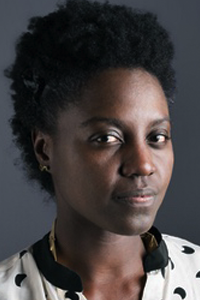
Andrianna Campbell. Photo courtesy of John Keon
Andrianna Campbell is a doctoral candidate in the Department of Art History at the CUNY Graduate Center, where she specializes in American art. Her doctoral research focuses on Norman Lewis and Abstract Expressionism in the post-World War II period. Alongside her scholarly research, she is the author of essays and reviews on contemporary art for Artforum, Art in America, Even and Frieze. Campbell was the coeditor of Shift: A Graduate Journal of Visual and Material Culture, a special 2016 edition of the International Review of African American Art dedicated to Norman Lewis and is currently a co-founder of the Apricota journal. She is the recipient of numerous fellowships and awards including the Dean K. Harrison Fellowship, the Preservation of American Modernists Award, the Library Fellowship from the American Philosophical Society, the Andrew W. Mellon Fellowship at the Dia Art Foundation, the Dissertation Writing Fellowship at the New York Public Library and the CASVA Chester Dale Fellowship from 2016-2017.
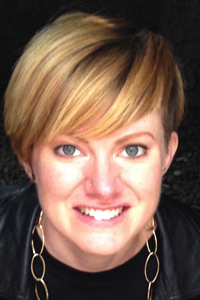
Katy Diamond Hamer is a journalist focusing on contemporary art and culture. She is the Founding Editor in Chief of the online publication Eyes Towards the Dove, has a Master’s degree from New York University and is based in Williamsburg, Brooklyn. An avid writer with her finger on the pulse, Hamer contributes art reviews, previews and interviews to CULTURED Magazine, Flash Art International, SLEEK Berlin, W Magazine, New York Magazine (Vulture) and others. She is frequently invited to speak at colleges and art residencies as a guest critic and has lectured to students at Sotheby’s Institute (NY), New York University (NY), Columbia University (NY), University of Pennsylvania (PA), Hofstra University (NY) and others. With a global focus being such a relevant part of the contemporary dialogue, Hamer also travels frequently and has taken press trips to Oslo, Stockholm, Bogota, Berlin, Miami, Philadelphia, LA, Dominican Republic, Boston, Connecticut and many other locations. Viewing, thinking about, and writing about contemporary art is her love and passion. She is often found with an iPhone in hand either taking notes or posting images to Instagram. When not looking at art she is at home with her poodle Loki Merz.
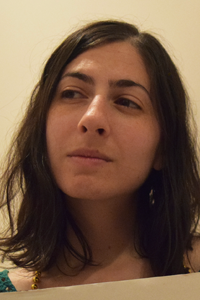
Jillian Steinhauer is the senior editor of Hyperallergic and a writer living in Brooklyn. Her work has appeared in such publications as the New Republic, Slate, the Los Angeles Review of Books, and the Paris Review Daily, and an essay of hers was included in Coffee House Press’s 2015 book Cat Is Art Spelled Wrong. This past summer, she served as the art-writer-in-residence at SPACES gallery in Cleveland and in 2014 won the Best Art Reporting award from the US chapter of the International Association of Art Critic. Jillian holds a master’s degree in Cultural Reporting and Criticism from New York University. In her free time, she’s been known to judge art events, tote bag competitions, and cat video festivals.
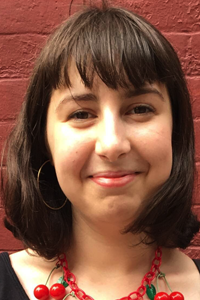
Julia Wolkoff is Assistant Editor at Art in America. She has reviewed artists such as Heidi Hahn, Tauba Auerbach, and Hilary Harnischfeger for the magazine and has covered exhibitions and museum openings in the United States, Europe, and Asia for the magazine’s website. In addition, she has contributed essays to the catalogues for exhibitions including “Lucid Gestures” (2015), at the Louise McCagg Gallery, Barnard College, “Goddess, Heroine, Beast: Anna Hyatt Huntington’s New York Sculpture, 1902-1936,” at the Wallach Art Gallery, Columbia University, and Joan Snitzer’s “Compositions” (2014), at A.I.R. Gallery, Brooklyn. At the 2016 Frieze Art Fair, New York, she moderated a talk on comics and contemporary art. Wolkoff graduated cum laude from Barnard in 2014.
Nato Thompson in Conversation with Sharon Louden

Nato Thompson joined Creative Time in January 2007. Since then, Thompson has organized such major Creative Time projects as The Creative Time Summit (2009-2015), Kara Walker’s A Subtlety (2014), Living as Form (2011), Trevor Paglen’s The Last Pictures (2012), Paul Ramírez Jonas’s Key to the City (2010), Jeremy Deller’s It is What it is (2009, with New Museum curators Laura Hoptman and Amy Mackie), Democracy in America: The National Campaign (2008), and Paul Chan’s Waiting for Godot in New Orleans (2007), among others. Previously, he worked as Curator at MASS MoCA, where he completed numerous large-scale exhibitions, including The Interventionists: Art in the Social Sphere (2004), with a catalogue distributed by MIT Press. His writings have appeared in numerous publications, BookForum, Frieze, ArtForum, Third Text, and Huffington Post among them. In 2005, he received the Art Journal Award for distinguished writing. For Independent Curators International, Thompson curated the exhibition Experimental Geography, with a book available from Melville House Publishing. His book Seeing Power: Art and Activism in the 21st Century was published in 2015.
